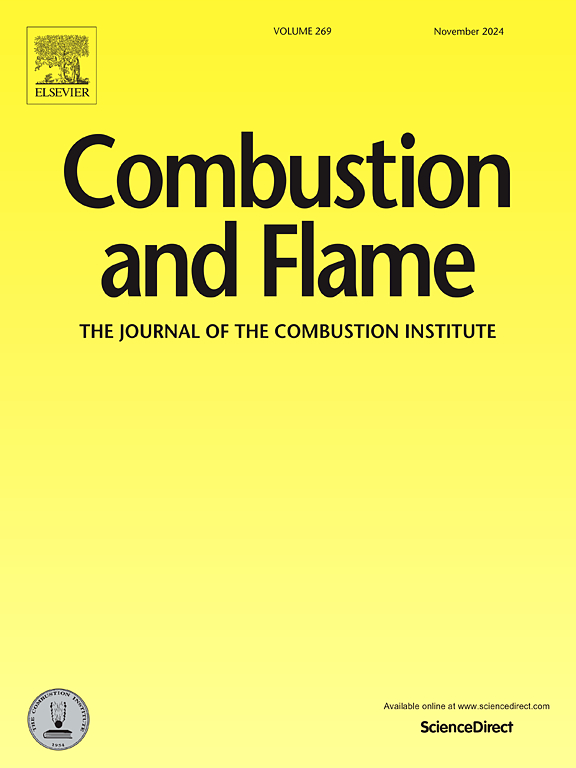Investigating NO emissions, stability, and flame structure in co-fired premixed NH3/CH4/air swirling flames
IF 5.8
2区 工程技术
Q2 ENERGY & FUELS
引用次数: 0
Abstract
Ammonia combustion poses challenges due to low reactivity and high NOx emissions, requiring optimization of combustor designs and fueling strategies. This study examines NO emissions, flame stability, and structure in co-fired premixed NH3/CH4/air flames using a double-swirl burner. The inner swirl stream consists of NH3/CH4/air mixtures with varying ammonia mole fractions (xNH3: 0 to 1) and equivalence ratios (Φin: 0.4 to 1.4), while the outer stream contains CH4/air mixtures with Φout ranging from 0.5 to 0.8 and Reynolds numbers (Reout) of 4350, 5250, and 6000. NO emissions varied significantly with Reout, Φin, and Φout, prompting further investigation of flame structure using OH-NO PLIF and PIV diagnostics for three flame sets: FA (Φin=0.4), FB (Φin=0.8), and FC (Φin =1.4). Far-rich (FC) and far-lean (FA) flames exhibited an early conical OH layer followed by a V-shaped OH layer, while NO dispersed across the flame, forming a thin layer at the OH boundary with a V-shaped distribution downstream. Higher Reout facilitated V-OH/NO formation through enhanced mixing, increased recirculation, and more effective ammonia cracking in rich mixtures. At Reout=4350, the absence of a V-OH layer in FA resulted in reduced NO emissions. Flame FB showed a broader, positively correlated NO and OH structure along the central region of the flame, indicating enhanced NHi oxidation to NO. Overall, co-firing ammonia with methane in the outer stream was crucial for improving flame stability. To minimize NO emissions, it is important to lower Reout, increase Φout, and avoid premixing NH3/CH4 in the inner stream. At high Reout, limiting rich Φin to 1.2 or leaning it out, combined with increasing Φout, was the most effective strategy for reducing NO emissions.
求助全文
约1分钟内获得全文
求助全文
来源期刊

Combustion and Flame
工程技术-工程:化工
CiteScore
9.50
自引率
20.50%
发文量
631
审稿时长
3.8 months
期刊介绍:
The mission of the journal is to publish high quality work from experimental, theoretical, and computational investigations on the fundamentals of combustion phenomena and closely allied matters. While submissions in all pertinent areas are welcomed, past and recent focus of the journal has been on:
Development and validation of reaction kinetics, reduction of reaction mechanisms and modeling of combustion systems, including:
Conventional, alternative and surrogate fuels;
Pollutants;
Particulate and aerosol formation and abatement;
Heterogeneous processes.
Experimental, theoretical, and computational studies of laminar and turbulent combustion phenomena, including:
Premixed and non-premixed flames;
Ignition and extinction phenomena;
Flame propagation;
Flame structure;
Instabilities and swirl;
Flame spread;
Multi-phase reactants.
Advances in diagnostic and computational methods in combustion, including:
Measurement and simulation of scalar and vector properties;
Novel techniques;
State-of-the art applications.
Fundamental investigations of combustion technologies and systems, including:
Internal combustion engines;
Gas turbines;
Small- and large-scale stationary combustion and power generation;
Catalytic combustion;
Combustion synthesis;
Combustion under extreme conditions;
New concepts.
 求助内容:
求助内容: 应助结果提醒方式:
应助结果提醒方式:


